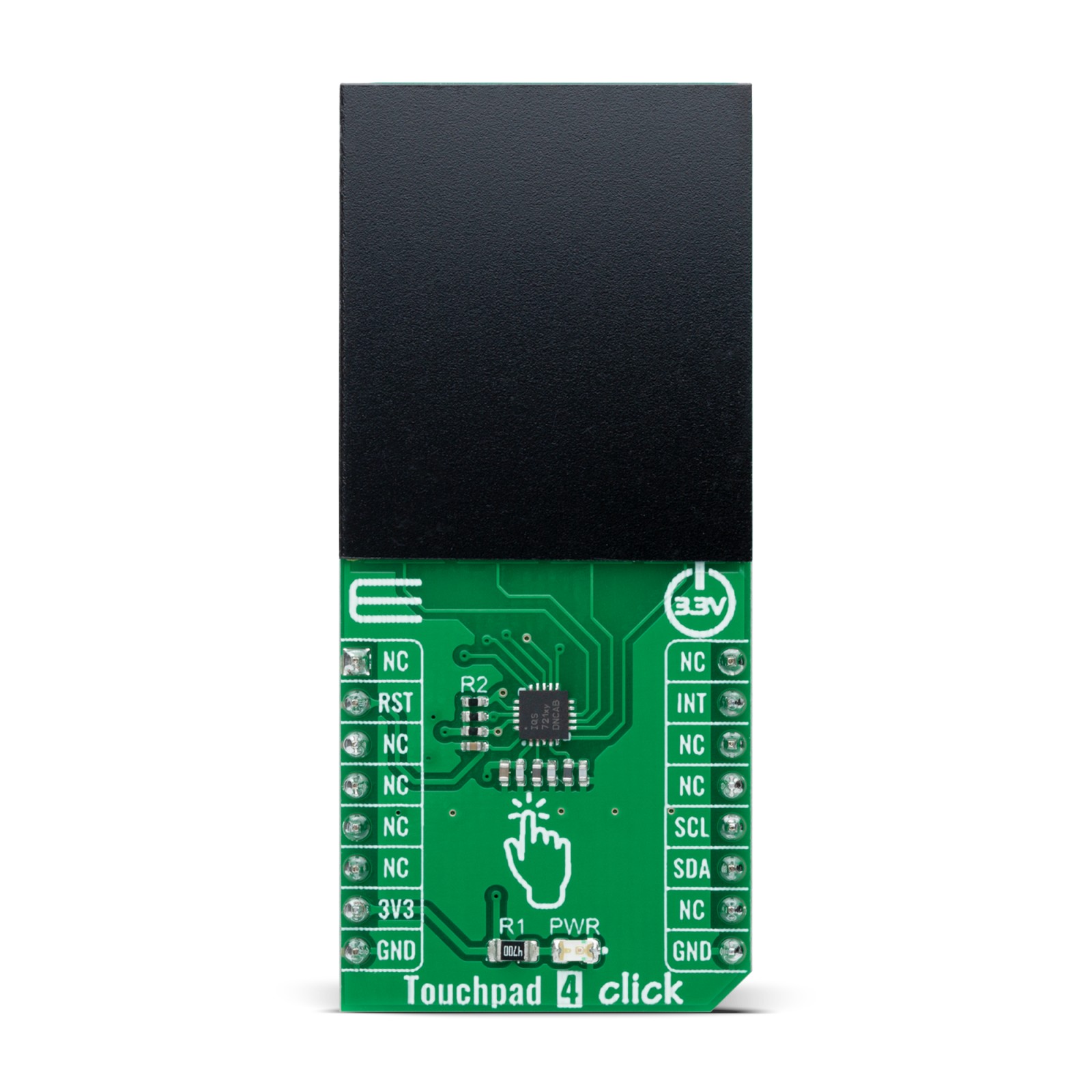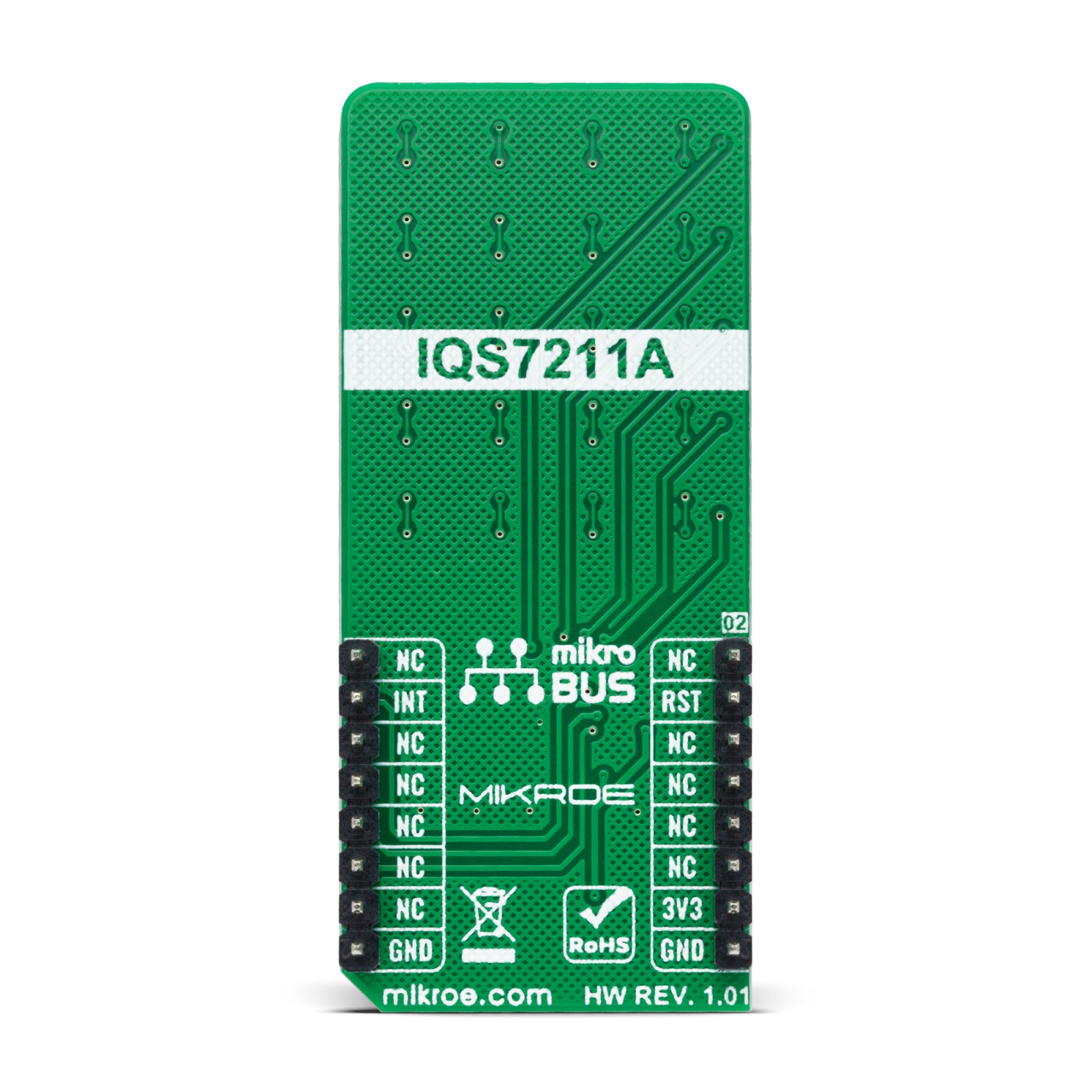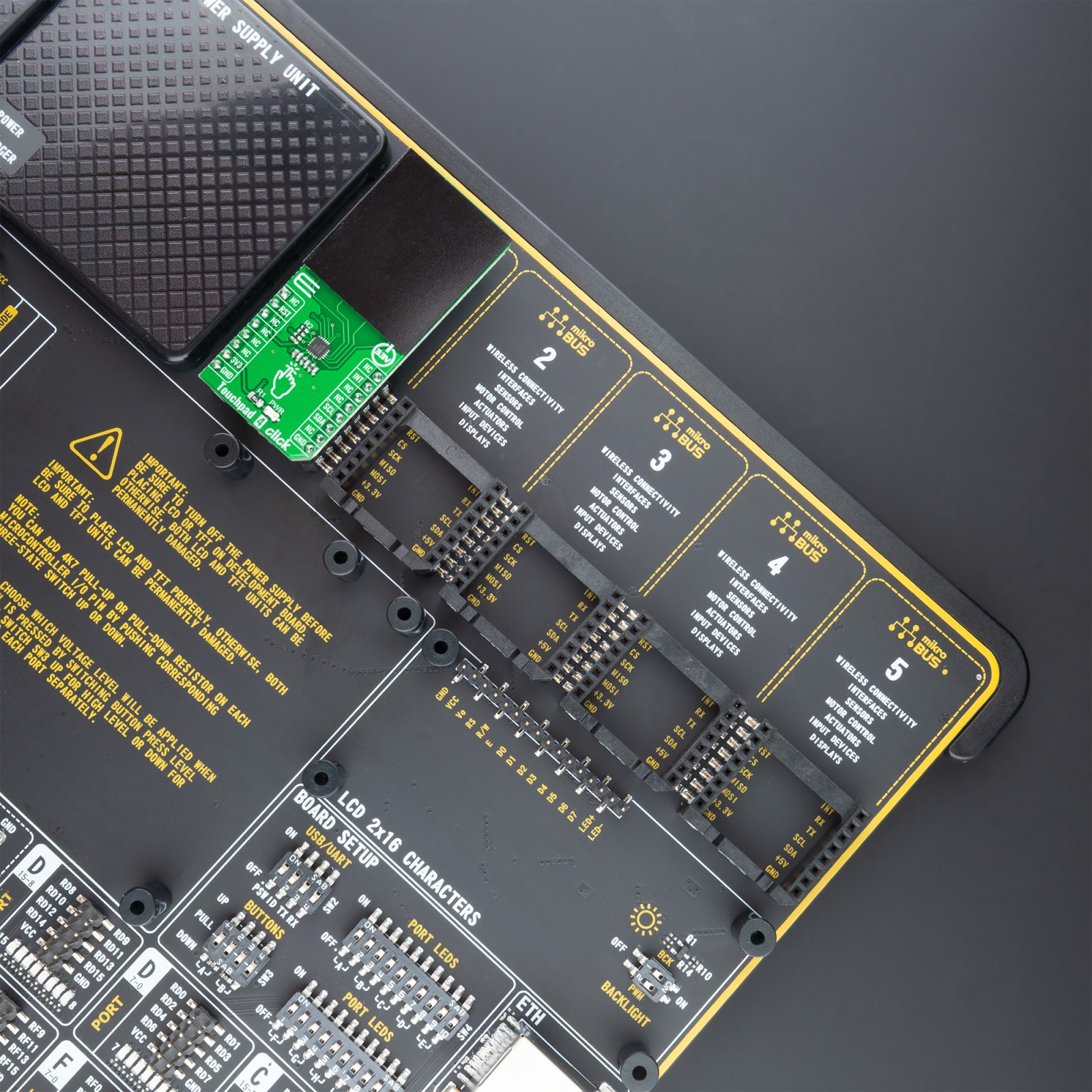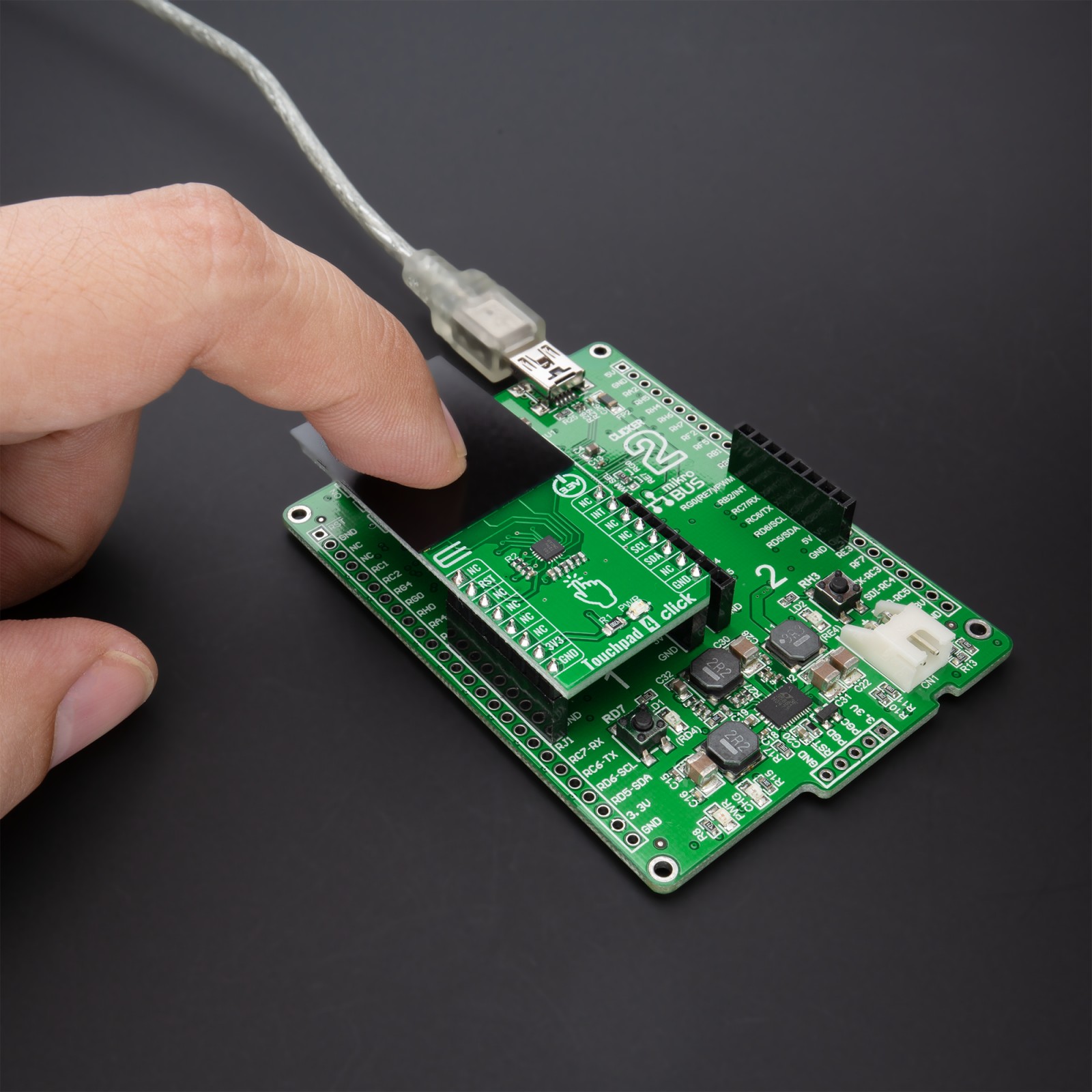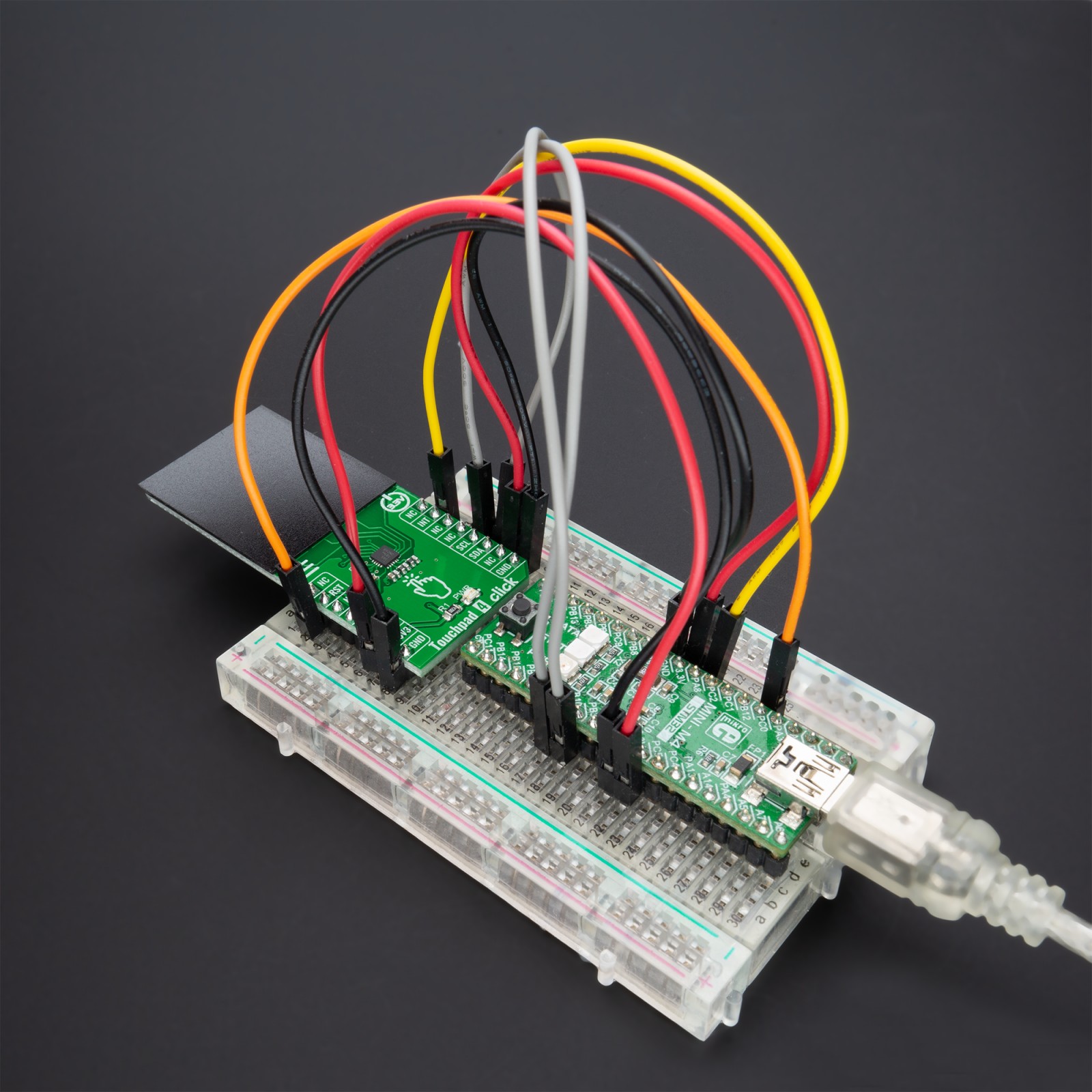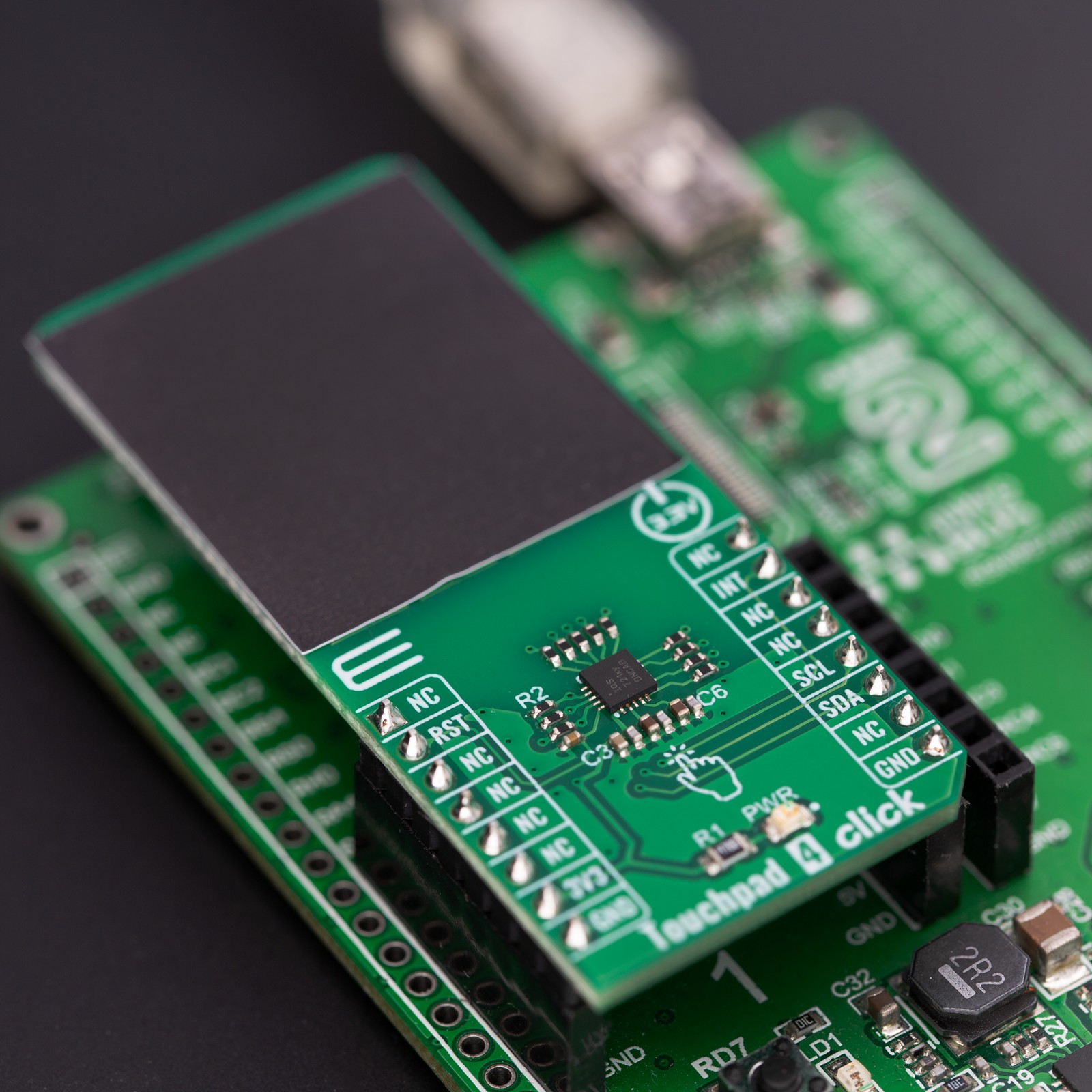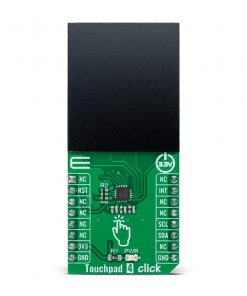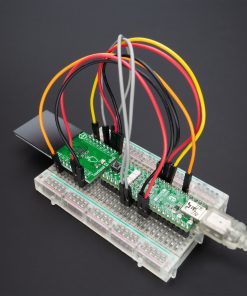Touchpad 4 Click
R245.00 ex. VAT
Touchpad 4 Click is a compact add-on board that easily integrates projected capacitive touch into user’s applications. This board features the IQS7211A, a tiny capacitive touch controller from Azoteq. A low-power dedicated wake-up touch controller launches a complete touchscreen sensing solution with a 25.4 x 29mm trackpad dimension, best-in-class sensitivity, and power consumption. It is characterized by embedded gesture engine recognition for simple gestures (tap, swipes, hold) and built-in noise detection and filtering. This Click board™ is suitable for human-machine interfaces, keypad or scrolling functions, single-finger gesture-based interfaces, and more.
Touchpad 4 Click is supported by a mikroSDK compliant library, which includes functions that simplify software development. This Click board™ comes as a fully tested product, ready to be used on a system equipped with the mikroBUS™ socket.
Stock: Lead-time applicable.
| 5+ | R232.75 |
| 10+ | R220.50 |
| 15+ | R208.25 |
| 20+ | R200.41 |

